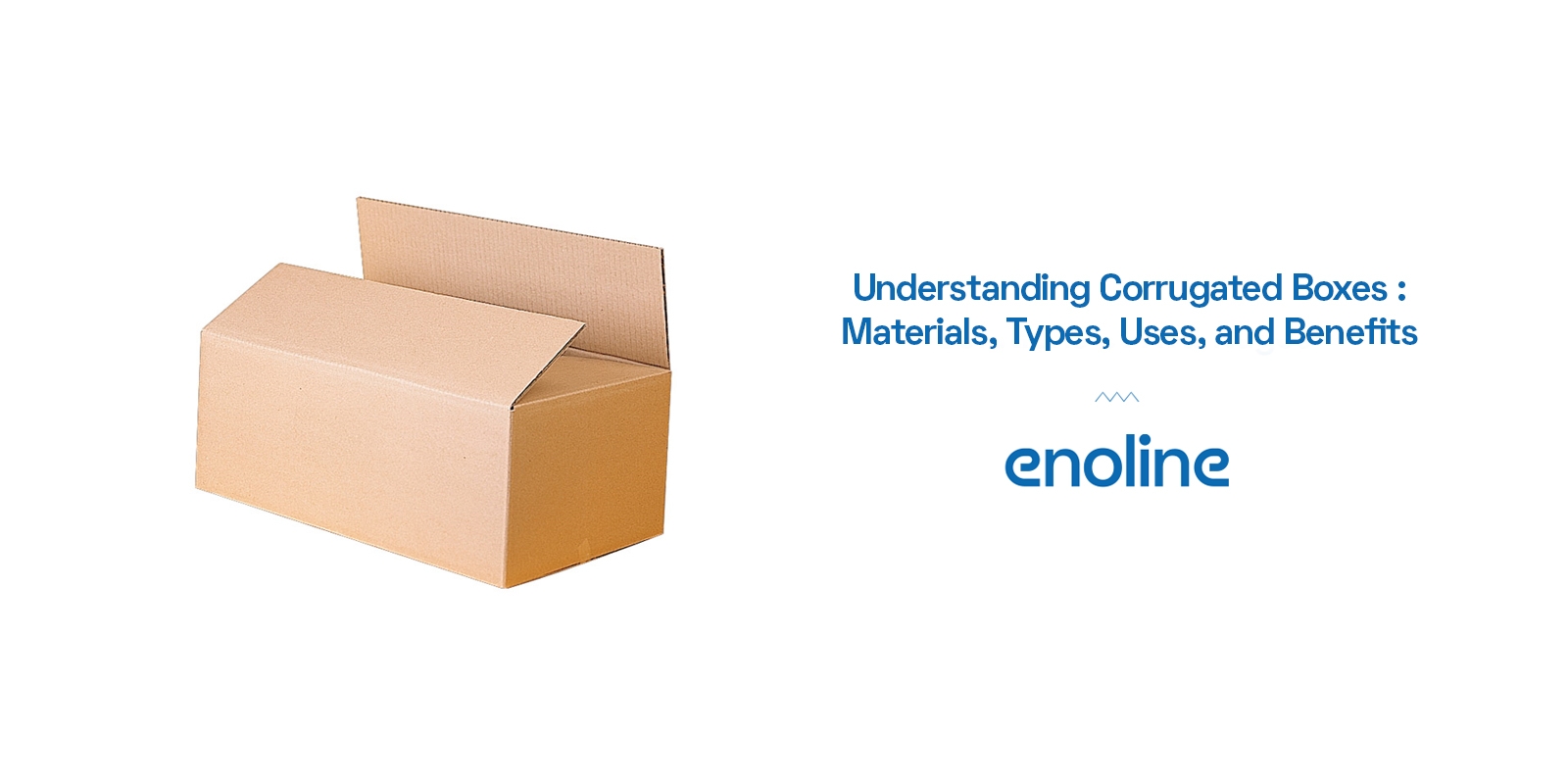December 20th
Understanding corrugated boxes: materials, types, uses, and benefits

A corrugated box is a container made from corrugated cardboard sheets. Its strength and durability make it widely used for shipping heavy or bulky items. In fact, 95% of all products shipped in North America use corrugated cardboard!
What is Corrugated Cardboard?
Corrugated cardboard, also known as corrugated fiberboard or fluted cardboard, typically consists of three layers of kraft paper: two flat outer layers (linerboard) and one fluted inner layer (medium). For example, pizza boxes are usually made from corrugated cardboard.
In some cases, additional layers may be added for more protection, as we'll see later.
Cardboard vs. Corrugated Cardboard: What’s the Difference?
Now that you know what corrugated packaging is and how commonly it's used for shipping, you might be wondering what differentiates it from regular cardboard. We briefly mentioned the difference, but let’s take a closer look.
Cardboard is generally made from pulp or thick paper. It’s commonly used for folded cartons for smaller products but can also serve as structural support inside a box to maintain its shape during shipping. However, plain cardboard isn’t as protective.
Corrugated Cardboard, on the other hand, has three layers of paper, providing added durability, protection, and versatility. This material resists bending and is one of the best options, whether you're shipping large boxes or just a few products.
Liner Types for Corrugated Cardboard
The liner types for corrugated cardboard include various options, such as:
Kraft Paper: Contains 70-80% virgin chemical pulp, making it rigid and durable.
Test Paper: Cheaper but with less strength, often used as an internal liner in boxes.
Flute Paper Liners: Made from semi-chemical or recycled paper waste.
Types of Flutes in Corrugated Cardboard
The different flutes play an important role in strength, protection, and compression characteristics of the boxes. Here’s a chart outlining the different flute sizes:
Flute | Thickness | Characteristics |
|---|---|---|
A-Flute | 1/4" | Highest cushioning protection, ideal for fragile products. |
B-Flute | 1/8" | Excellent resistance to punctures and crushing, provides a flatter surface for printing. |
C-Flute | 3/16" | Flexible flute used for a variety of packaging, including glass products. |
E-Flute | 1/16" | Thin flute suitable for delicate products, perfect for cosmetics packaging. |
F-Flute | 1/32" | Similar protection properties to E-Flute but with a smoother surface for high-quality printing. |
Types of Corrugated Cardboard
The various layers can be combined to create different corrugated cardboard structures, such as:
Single Face: One face with visible flute.
Single Wall: The most common type, with two layers of linerboard and one layer of flute.
Double Wall: Three layers of linerboard and two layers of flute.
Triple Wall: Four layers of linerboard and three layers of flute, capable of carrying heavy loads.
Quality Control Tests
Corrugated boxes undergo various tests to ensure their durability and ability to withstand heavy loads:
Edge Crush Test: Tests the resistance of the cardboard’s edge under pressure.
Flat Crush Test: Tests the resistance of the flat surface of the box to compression.
Mullen Test: Tests the bursting strength of the cardboard surface.
Advantages of Corrugated Packaging
The main reasons why corrugated packaging is popular include:
Protection and Durability: Protects your products during transit.
Eco-Friendly: Made from recycled fibers, easily recyclable.
Customizable: Offers options for custom shapes and prints.
Disadvantages of Corrugated Boxes
Limited Resistance to Weather: Sensitive to weather conditions like rain.
Cost: Relatively more expensive than other packaging options.
Create Your Customized Corrugated Boxes Today!
Let us find the best packing solution for your company !